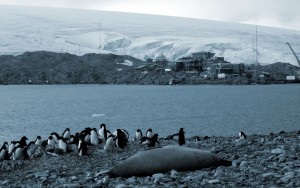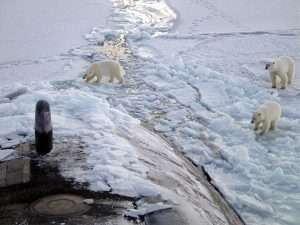Why the Polar Regions?
The Earth’s Polar Regions are very important relative to their spatial size. Changes or shifts in these regions will greatly impact societies all over the globe.
The water masses on the shelves of Antarctica’s continental seas play an important role in the moving heat and carbon around the global ocean, which is key for the global climate system. However, during the past half-century the West Antarctic Peninsula has become the fastest winter warming area on Earth, with surface air temperatures increasing by 6°C (5.4 times the global average) and 87% of the glaciers are in retreat. The collapse of the West Antarctic ice sheets will happen in the coming decades.
In the Arctic, sea ice cover is declining at roughly 11% each decade. Changes in ice shelves and sea ice raise sea level, which will impact coastal communities around the world as well as change the way animals interact with and survive in their environments. Losing Arctic sea ice will also have an impact global commerce (as shipping routes are changed and natural resources are more accessible), which has immense geopolitical/economic ramifications.
The changes in the Polar Regions appear to be happening faster and faster. Scientists are trying to understand both the patterns and resulting impacts.
Similar to other places on the Earth, specific locations of the Arctic and Antarctic are experiencing greater changes than others. By studying these places of great change, we can increase our understanding of how shifts in the physics impact the chemistry and biology in the ecosystems.
Communicating this process and the gained knowledge to broader audiences is critical for societies to understand what is happening in the poles and where they live.
Therefore, it is a critical time to broaden the reach of polar science to as many audiences outside of academia as possible to bring these changes and consequences to the attention of the general public.
To learn more about what Polar-ICE is doing, check out the rest of our website.
Interested in seeing cool photos and videos from the Poles?



